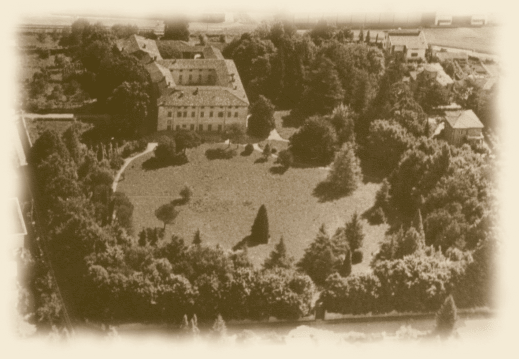Villa Grismondi Finardi is situated in the lower part of Bergamo, in
the middle of an ancient farm that was transformed in this century in a beautiful "garden-quarter" of
the town.
The origins of the Villa, reported on the old maps as "Il Palazzo"
("The Palace"), are in the XVI century, but the previous nucleous of the original building are more ancient.
The architectural structure presents aspects, from one side, of the XVIII
century "luogo di villeggiatura" ("vacation place"), and from the other side of the rural court
typical of corn, grapes cultivation and siklworm-breeding.
The Villa's artistic history shows an archaic structure that has had
an evolution througout the different centuries till the romantic XIX century decoration, and varies in the different
buildings:
1) the "Palazzo" the "manor house" used for vacations
in summer-time;
2) the rural house for farmers and stables for animals;
3) the silkworm-breeding and cultivation part;
4) the Finardi park, all around the buildings.
The arms of Grismondi and Finardi families are here shown because they
gave the Villa its actual structure and name; nevertheless, in the past, the families of Cornolti and Biava lived
in the old "Palazzo".
In the XVIII century the Grismondi family owned the Villa and in summertime
it used to host countess Paolina Grismondi Secco Suardo, a poetess of arcadian period with the surname of Lesbia
Cidonia, who had an important "drawing-room", as was the custom in that century, with other important
poets as Pindemonte and Mascheroni, whose most important work is "Invito a Lesbia Cidonia", addressed
to her.
Since about 1860 the owners are the Finardi, a bergamasca family that
has been important since the venetian domination in Bergamo: Giovanni Finardi in particular joined the Garibaldi's
"Mille" and was mayor in Bergamo at the turn of the century and sat on the Parliament in Rome. His sons
founded the Finardi-quarter in the area of the ancient farm with some urbanistic rules in order to obtain a garden-quarter
formed by cottages or little houses with gardens.


